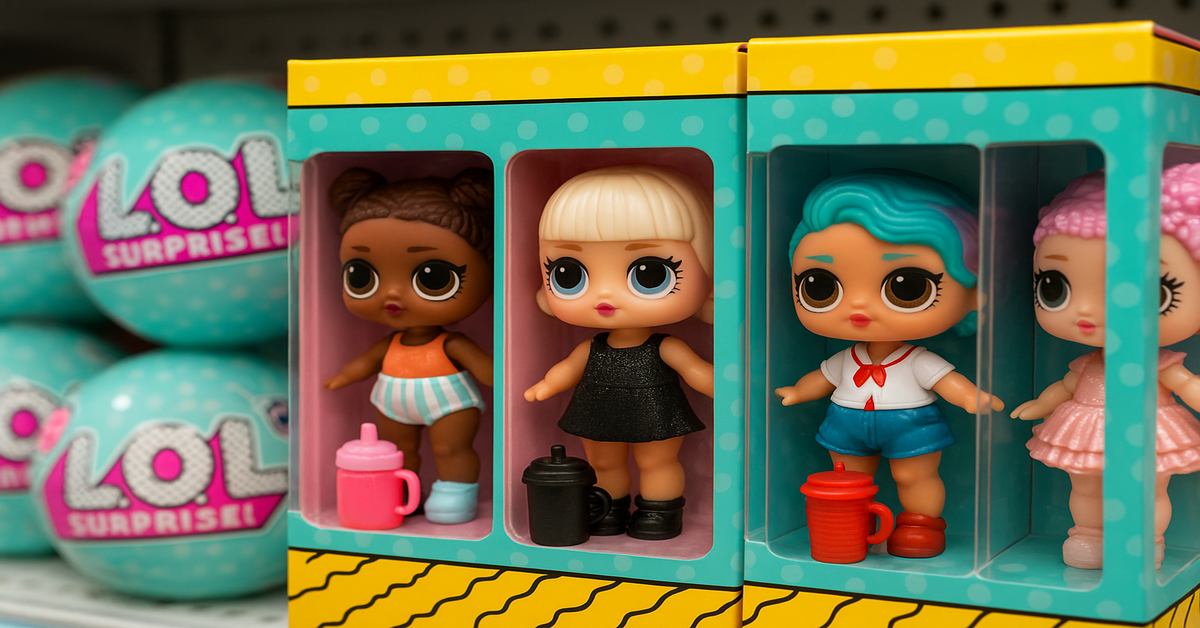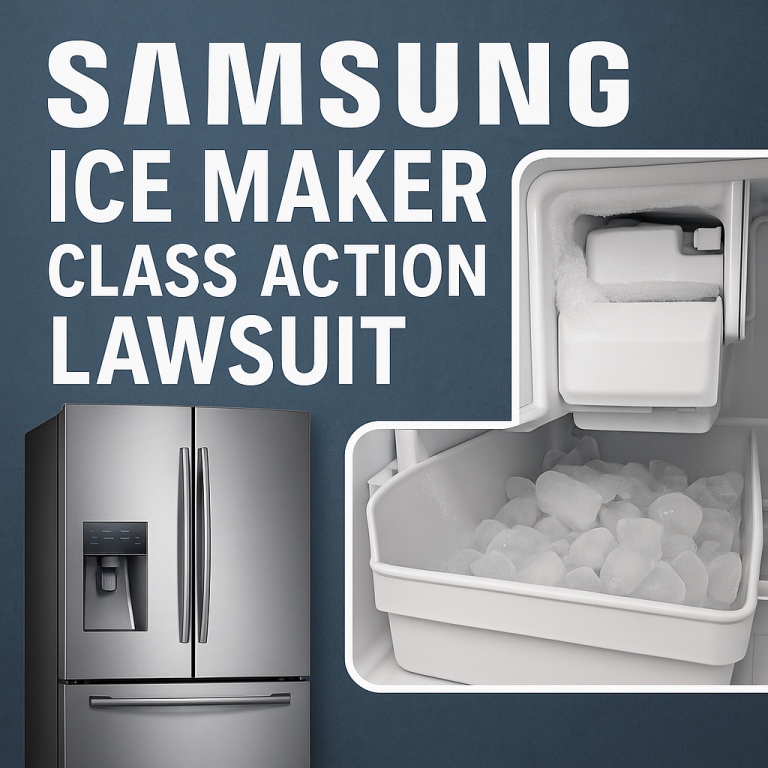The LOL Dolls lawsuit began as a consumer outcry and quickly escalated into national litigation. In 2020, parents discovered that some LOL Surprise Dolls revealed lingerie-like patterns and tattoos when placed in cold water. Videos of shocked parents and children went viral on TikTok. The resulting public backlash led to class action lawsuits against MGA Entertainment, the maker of LOL Dolls.
Parents alleged that MGA had engaged in deceptive marketing. They claimed the company failed to warn about adult-themed designs hidden in toys marketed to young children. Emotional distress claims followed. Consumer advocates called for greater transparency in toy design and labeling.
This article explains what triggered the LOL Dolls lawsuit, why parents took legal action, and what toy companies should learn from the case. You will also discover how the lawsuit affected the industry and what lessons parents can apply when buying toys today.
What Triggered the LOL Dolls Lawsuit?
The controversy behind the LOL Dolls lawsuit began on social media. Parents who had purchased LOL Surprise Dolls started posting videos revealing a disturbing discovery.
These dolls transformed when placed in cold water, as advertised. However, in addition to expected color changes, many revealed what appeared to be lingerie patterns, fishnet stockings, or risqué tattoos. Parents were outraged.
TikTok videos featuring the hashtag #LOLLawsuit showed children’s shocked reactions. Angry parents demanded answers. MGA Entertainment had marketed the dolls as safe and appropriate for young children. Yet, the packaging failed to disclose this adult-themed transformation feature.
Soon, class action lawsuits emerged in several states. Legal claims focused on consumer deception and emotional harm. The LOL Dolls lawsuit was born out of this viral backlash and a growing demand for toy industry accountability.
Why Did Parents File the LOL Dolls Lawsuit?
Parents filed the LOL Dolls lawsuit because they believed MGA had misled them. The company’s marketing materials described the dolls as collectible and interactive. However, they made no mention of the lingerie patterns or body art that appeared when the dolls were placed in cold water.
Parents felt deceived. They argued that no reasonable consumer would expect adult-themed content in toys designed for children as young as four. Many said they would not have purchased the dolls if they had known.
Beyond deception, parents also cited emotional harm. Videos documented children’s distress when their dolls transformed unexpectedly. Some children became upset or confused, prompting difficult conversations for parents.
The lawsuits sought compensation for emotional distress, refunds, and punitive damages. Plaintiffs argued that MGA should face financial consequences for failing to disclose the full nature of the dolls’ water-activated features.
How Do LOL Dolls’ Water Features Work?
The water interaction feature is central to LOL Surprise Dolls’ design. The dolls encourage children to explore different surprises through water play. When submerged in cold water, some dolls cry, spit, or change color—these behaviors are promoted in MGA’s marketing. However, the lingerie patterns and tattoos were not.
Parents discovered that certain dolls’ outfits transformed into revealing designs. Fishnet stockings, garter belts, and thong-like underwear appeared on dolls marketed as innocent collectibles. MGA stated that these transformations were part of the dolls’ fantasy-based storytelling. The company denied any intent to sexualize the dolls. However, parents argued that such features should have been fully disclosed on the packaging.
What Legal Claims Did the LOL Dolls Lawsuit Involve?
The LOL Dolls lawsuit centered on consumer protection claims. Plaintiffs argued that MGA violated state consumer protection laws by failing to disclose material facts about the dolls.
False advertising claims alleged that MGA misled consumers. The dolls were marketed as safe and appropriate for children. Yet, the lingerie and tattoo transformations suggested otherwise.
Negligent misrepresentation claims followed. Parents said they relied on MGA’s representations in deciding to buy the dolls. They claimed that MGA omitted critical information about the dolls’ full behavior.
Emotional distress claims also appeared in the lawsuits. Parents alleged that MGA’s conduct caused harm to both them and their children. They sought damages to compensate for this distress.
Finally, plaintiffs requested refunds and attorney’s fees. They wanted to recover the costs of buying the dolls and pursuing legal action.
How Did MGA Entertainment Respond to the LOL Dolls Lawsuit?
MGA Entertainment denied wrongdoing in the LOL Dolls lawsuit. The company maintained that the dolls’ water-activated features were designed to foster imaginative play. MGA argued that no sexual intent was behind the lingerie patterns or tattoos. According to the company, the transformations were playful surprises meant to engage children in creative storytelling. MGA also pointed to packaging disclaimers. The boxes stated that the dolls could change color when exposed to water. However, the disclaimers did not specify the appearance of lingerie or body art.
During litigation, MGA filed motions to dismiss several claims. The company argued that plaintiffs had not demonstrated concrete legal harm. It also maintained that parents retained responsibility for supervising children’s play. Despite public backlash, MGA defended its products and design choices throughout the LOL Dolls lawsuit.
How Did Social Media Drive the LOL Dolls Lawsuit?
Social media was the spark that ignited the LOL Dolls lawsuit. Without TikTok and other platforms, the issue might never have reached national attention. Parents began posting videos showing the dolls’ water-activated transformations. Hashtags like #LOLLawsuit and #LOLDollScandal gained traction quickly. The videos drew millions of views, sparking outrage among parents across the country. The viral posts caught the attention of consumer advocacy groups and law firms. Attorneys began recruiting plaintiffs for potential class actions. The lawsuits soon followed.
Media outlets picked up the story, amplifying the controversy. National news coverage highlighted parents’ concerns and detailed the lingerie and tattoo designs. The power of social media transformed isolated incidents into a collective legal battle. The LOL Dolls lawsuit became a case study in how online platforms can drive consumer activism and corporate accountability.
What Was the Outcome of the LOL Dolls Lawsuit?
As of early 2025, the LOL Dolls lawsuit produced mixed outcomes. Some cases were settled confidentially, meaning the details remain unknown to the public. Other cases were dismissed voluntarily or through court rulings. In many instances, courts found it difficult for plaintiffs to prove tangible legal harm. Emotional distress alone often did not meet the threshold required for damages.
No large public class action payout has been reported. However, the lawsuits forced MGA to reevaluate its marketing practices. The company updated some packaging and included clearer warnings about color-change features. While the dolls remain on the market, MGA faces ongoing scrutiny. The LOL Dolls lawsuit left a lasting mark on the brand’s reputation and reshaped how toy companies approach surprise-based features.
How Did the LOL Dolls Lawsuit Affect the Toy Industry?
The LOL Dolls lawsuit sent shockwaves through the toy industry. It exposed vulnerabilities in how companies market interactive features to children and their parents. Toy makers now recognize that consumers expect full transparency. Features that might seem fun in a corporate design session can appear inappropriate in the eyes of parents.
The lawsuit also demonstrated the power of social media. A few viral TikTok videos triggered national litigation and regulatory scrutiny. Toy companies need to monitor online sentiment and take proactive steps. Many manufacturers are now looking at their packaging and marketing copy to ensure parents understand what a toy does prior to purchase. Being clear and upfront can reduce misunderstanding and mitigate risk. The LOL Dolls lawsuit changed industry standards. Transparency and consumer trust now sit at the forefront of toy marketing strategies.
What Should Parents Learn from the LOL Dolls Lawsuit?
Parents can take several lessons from the LOL Dolls lawsuit. First, they should research toys thoroughly before purchase. Social media, consumer reviews, and advocacy groups offer valuable insights.
Second, supervision remains essential. Parents should engage with their children during playtime, especially when a toy includes surprise or interactive elements.
Third, communication is key. Parents should talk openly with children about unexpected toy behaviors. This helps children process any confusion or discomfort they might experience.
Finally, parents should not hesitate to voice concerns. The LOL Dolls lawsuit shows that collective consumer action can lead to industry changes. Speaking up matters.
Armed with these lessons, parents can make more informed choices and advocate for safer, more transparent toys.
What Lessons Should Toy Companies Learn from the LOL Dolls Lawsuit?
Toy companies should view the LOL Dolls lawsuit as a cautionary tale. Transparency is critical. Features that surprise should delight—not disturb. Companies must evaluate all product features through the lens of parents and young children. This requires extensive play testing and focus group feedback.
Legal disclaimers are no substitute for clear marketing. Packaging should disclose all potentially controversial features in plain language. Monitoring social media is now essential. Businesses cannot afford not to understand the events surrounding and perceptions customers have of their products online. If a company can redirect a narrative through timely interaction, it can often prevent debates from escalating.
Most importantly, toy manufacturers need to build trust with their consumers. Developing and preserving trust with consumers is central to their success and longevity. The LOL Dolls lawsuit is a glaring case of instances in which trust was undermined.
Frequently Asked Questions (FAQs)
What is the LOL Dolls lawsuit about?
The LOL Dolls lawsuit concerns hidden lingerie patterns and tattoos revealed when LOL Dolls are placed in cold water.
Why did parents sue MGA Entertainment?
Parents sued MGA Entertainment, alleging deceptive marketing and emotional harm caused by undisclosed toy features.
What was the outcome of the LOL Dolls lawsuit?
The lawsuit resulted in some settlements and dismissals. No large public class action payout has been reported.
Did MGA admit wrongdoing?
No. MGA defended its design choices and denied any intent to sexualize the dolls.
What lessons does this case offer?
The case underscores the need for transparency in toy marketing and highlights the power of consumer activism.
Conclusion
The LOL Dolls lawsuit has changed how toy companies view transparency and marketing. A couple of viral videos turned in to a national litigation matter. The parent’s litigation claims drew attention to important concepts such as disclosures and clearly what design factors should be considered age appropriate. While there were no sweeping wins for the claimants in any court, it seems the lawsuits may have caused MGA and a number of toy companies to reconsider their practices.
The case is even more interesting because it shows that these types of actions can be driven by consumers, who have been empowered by social media. Parents raised awareness of their concerns and were able to create real change. This lawsuit will ultimately be remembered most for its effect on trust in the toy industry, and trust starts with transparency.




